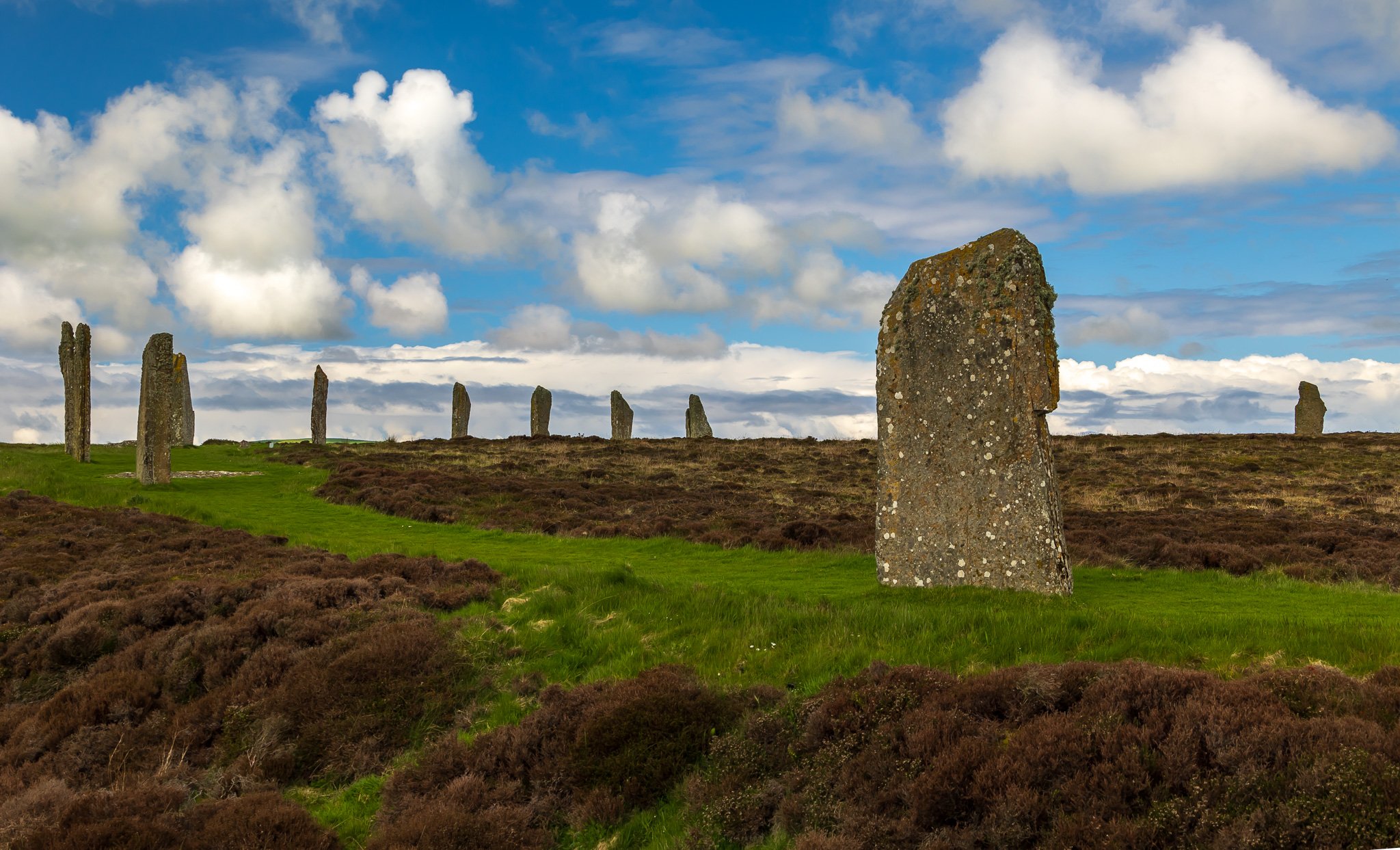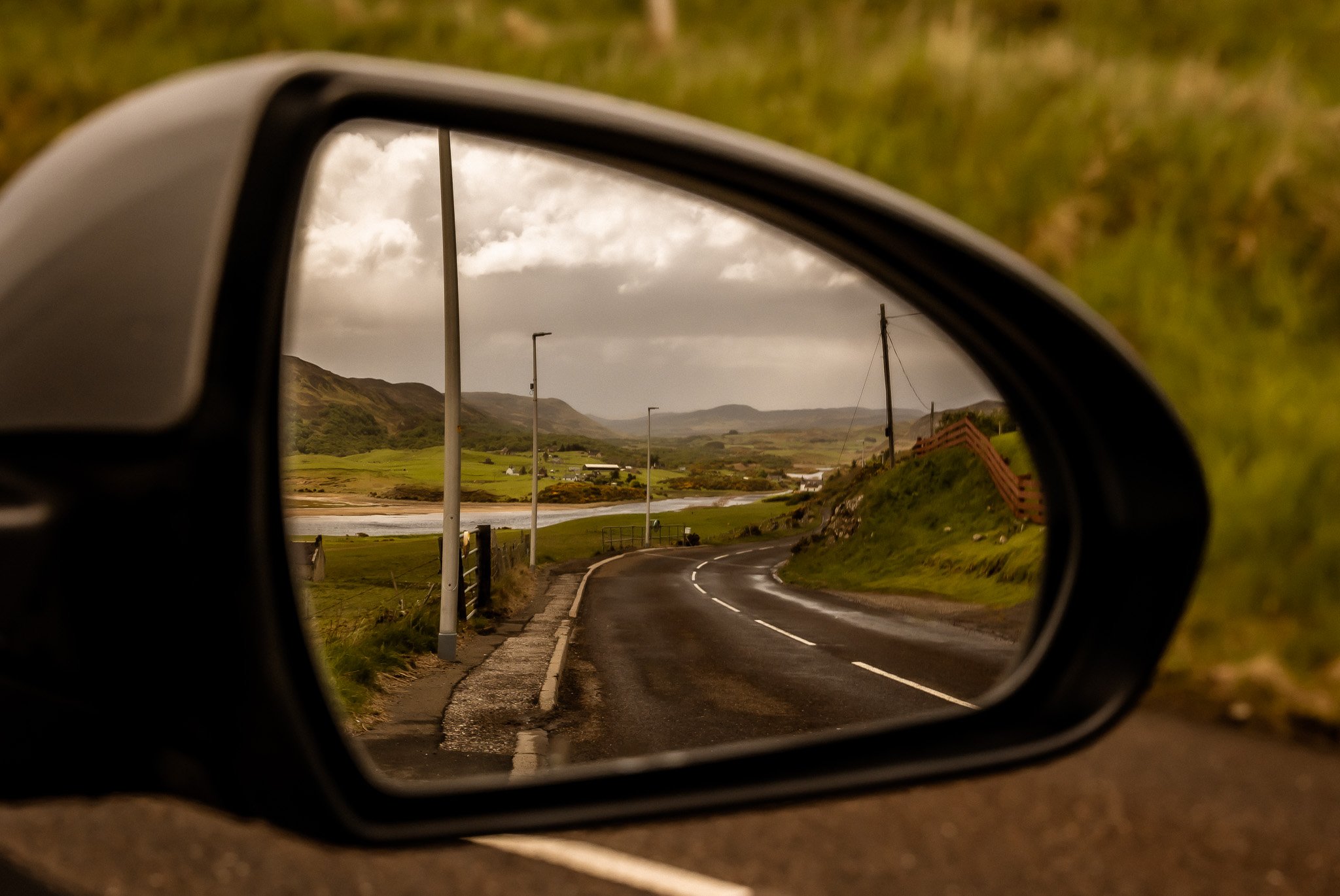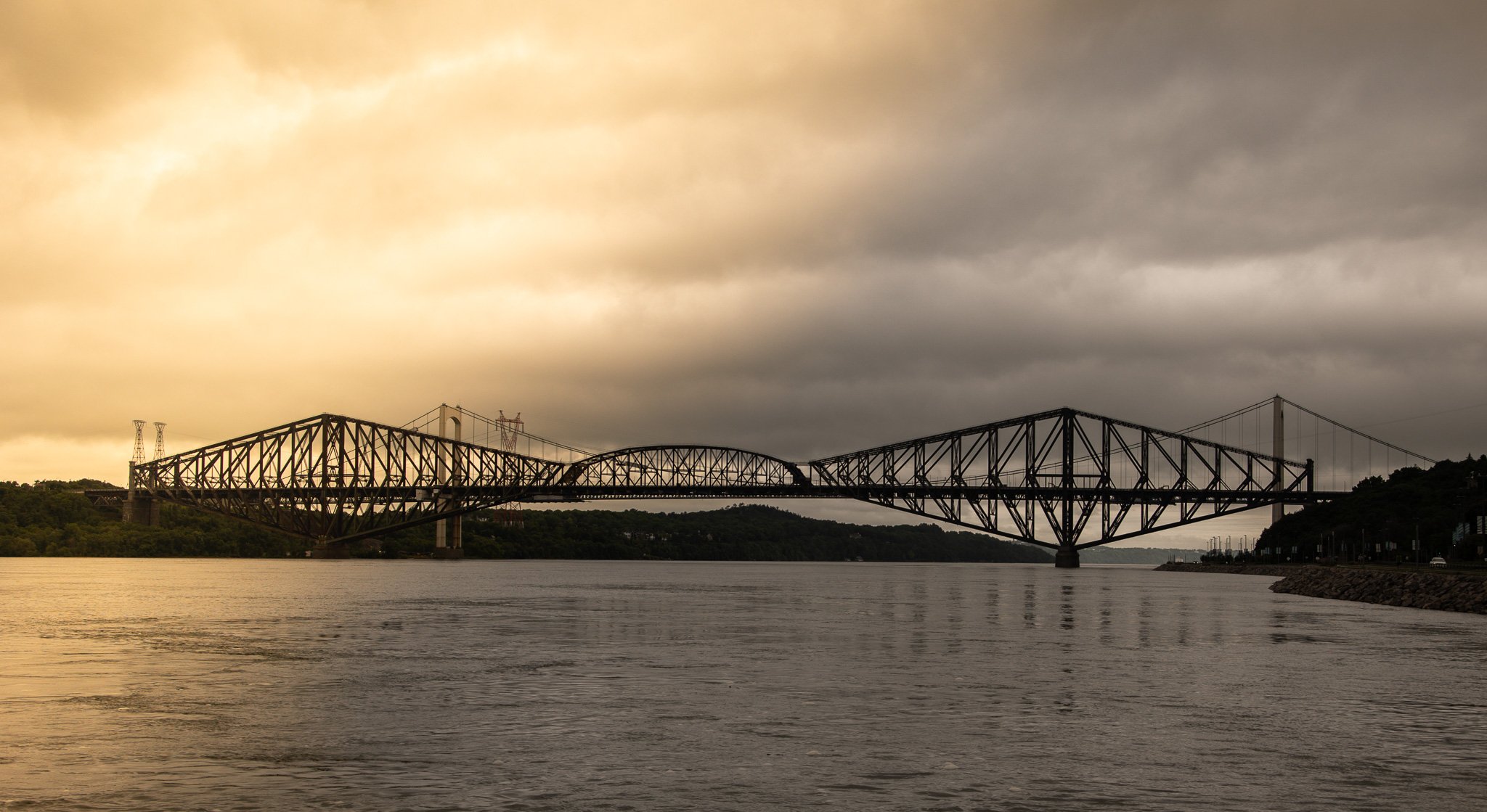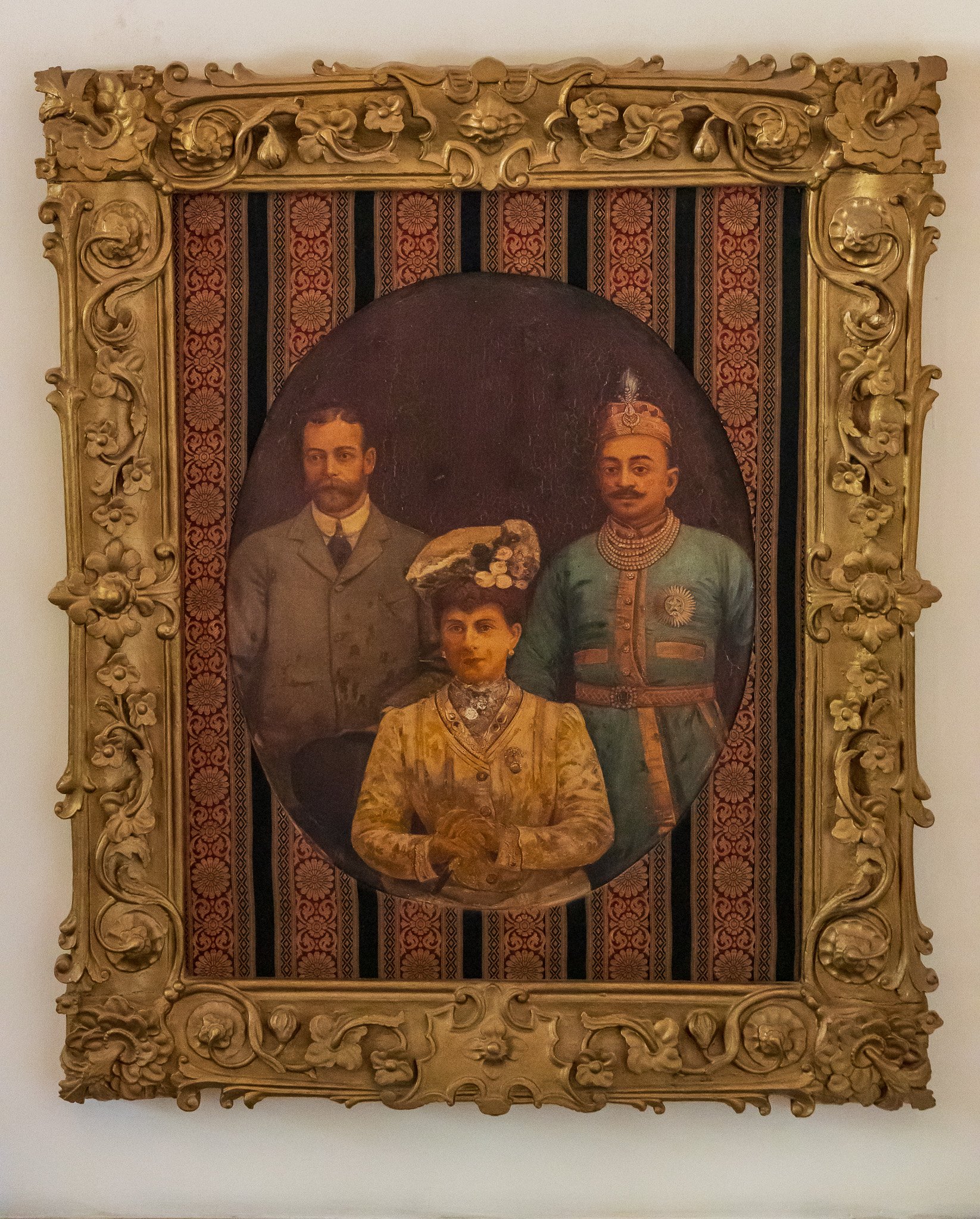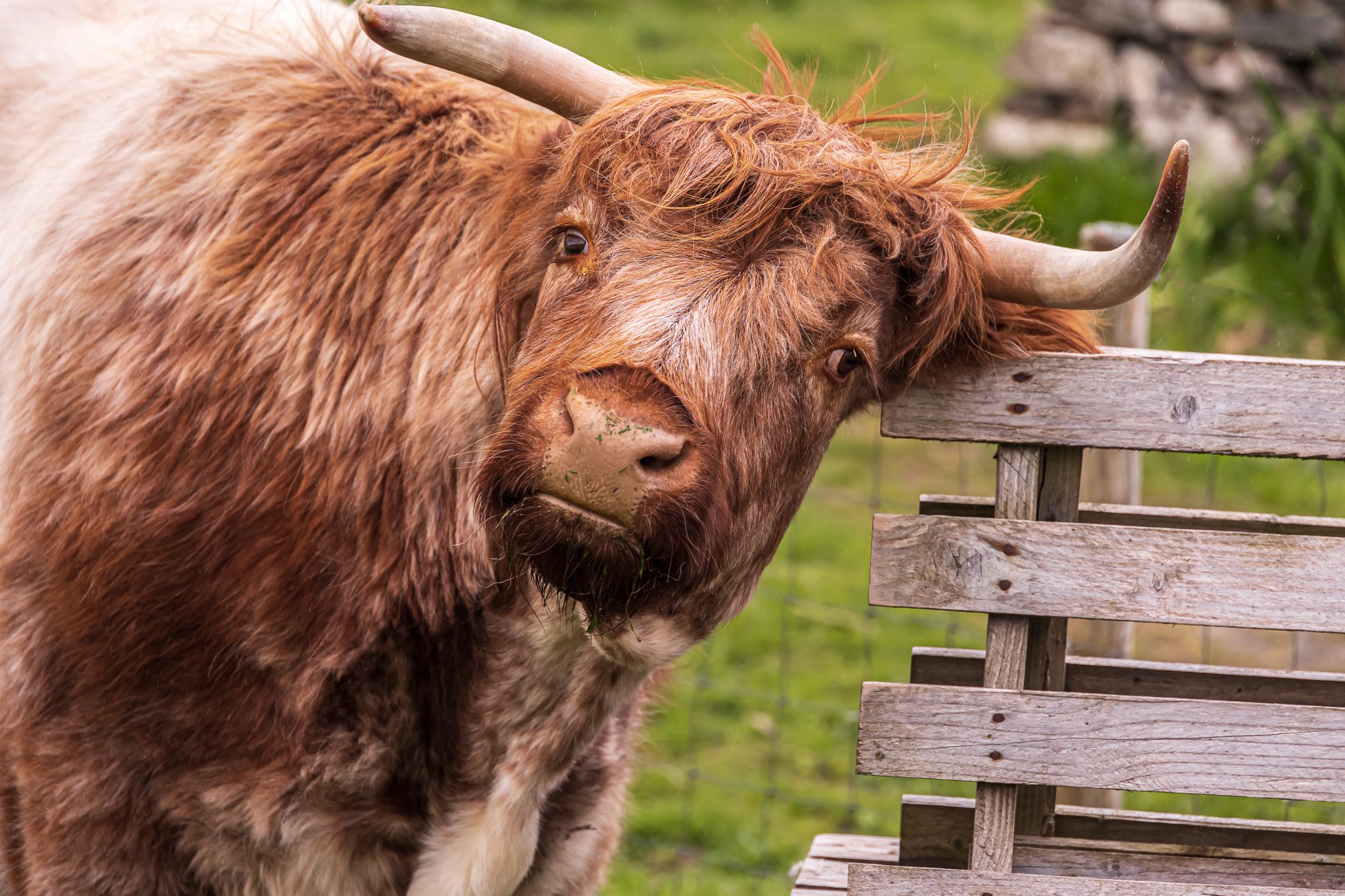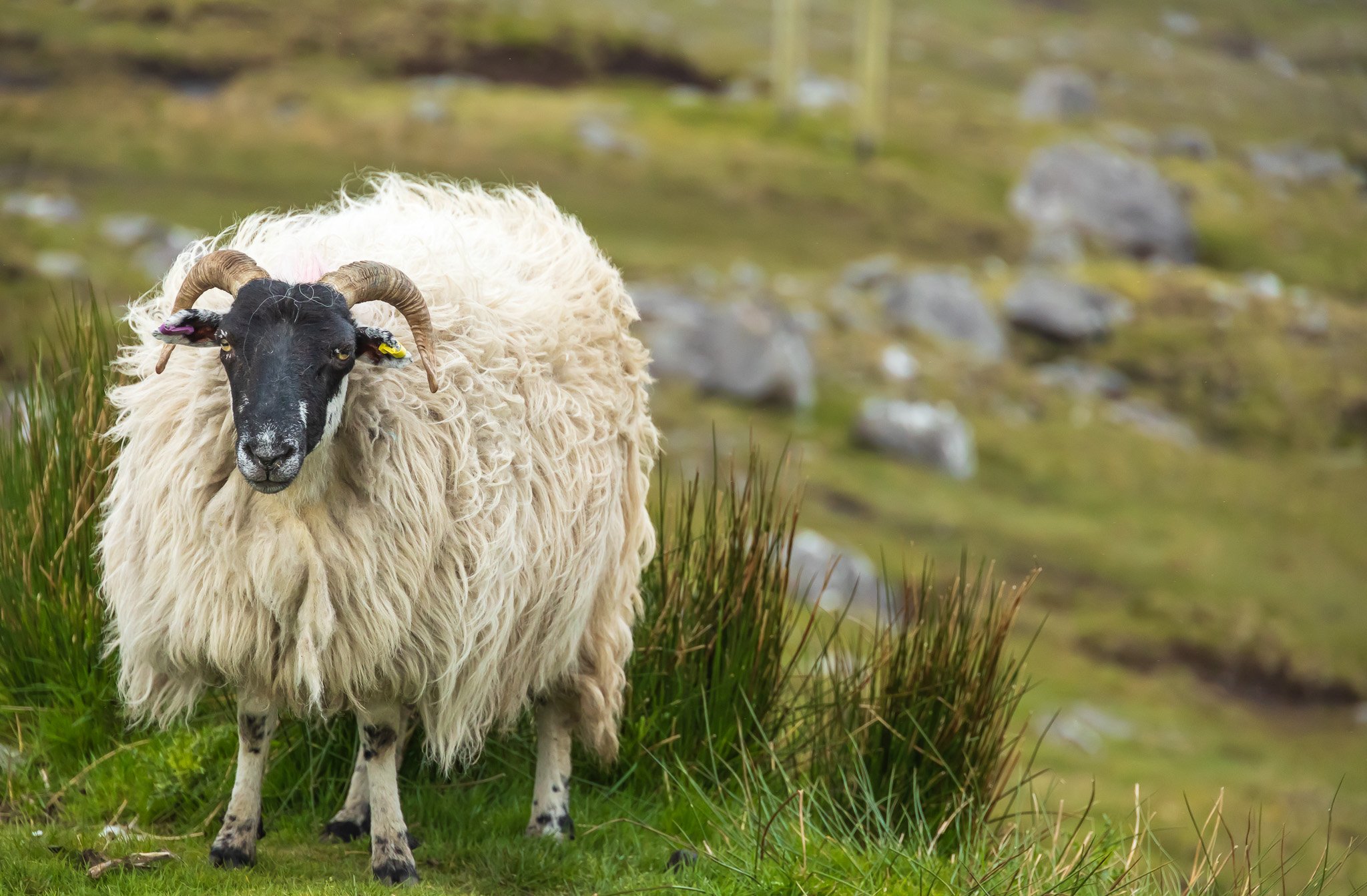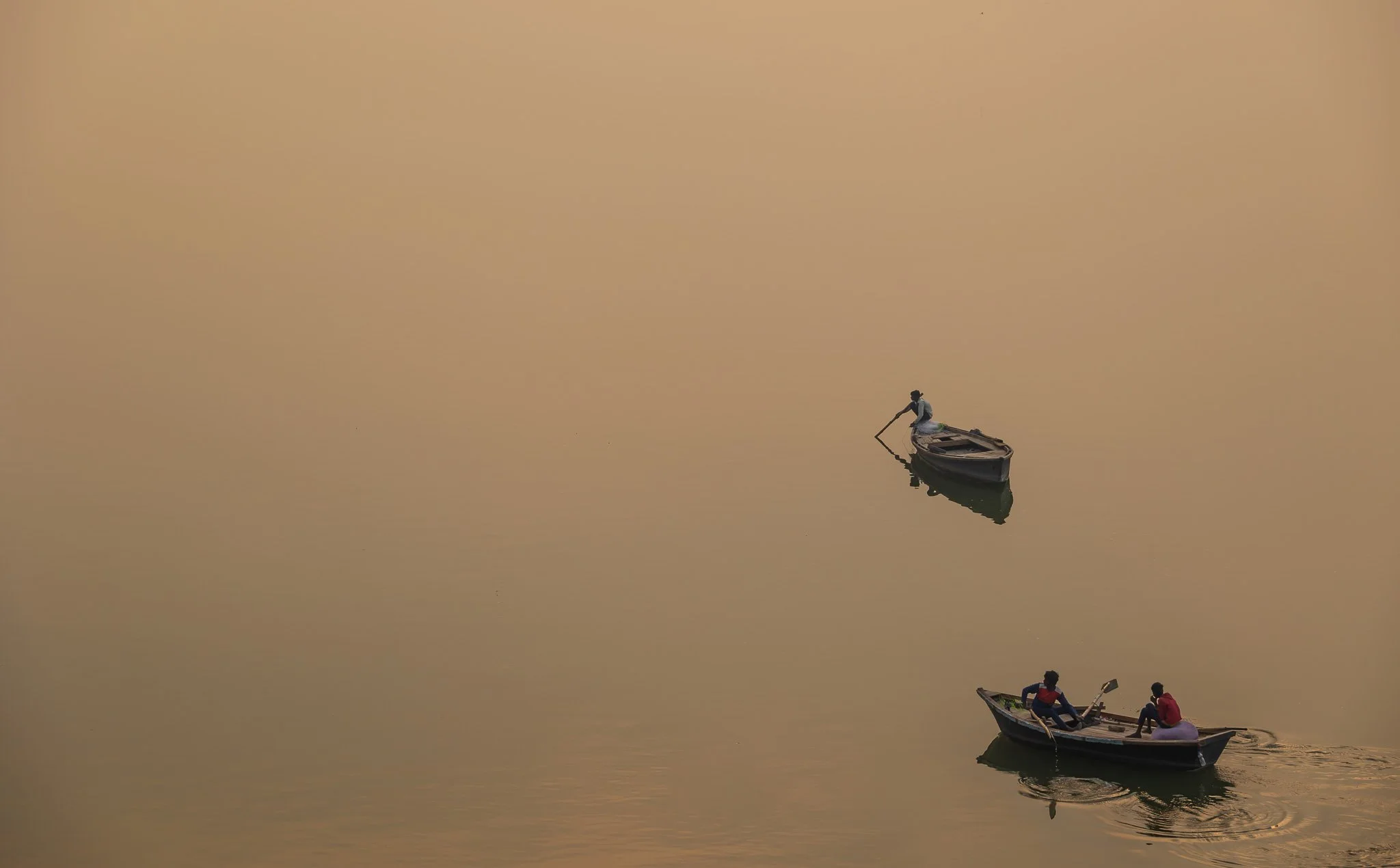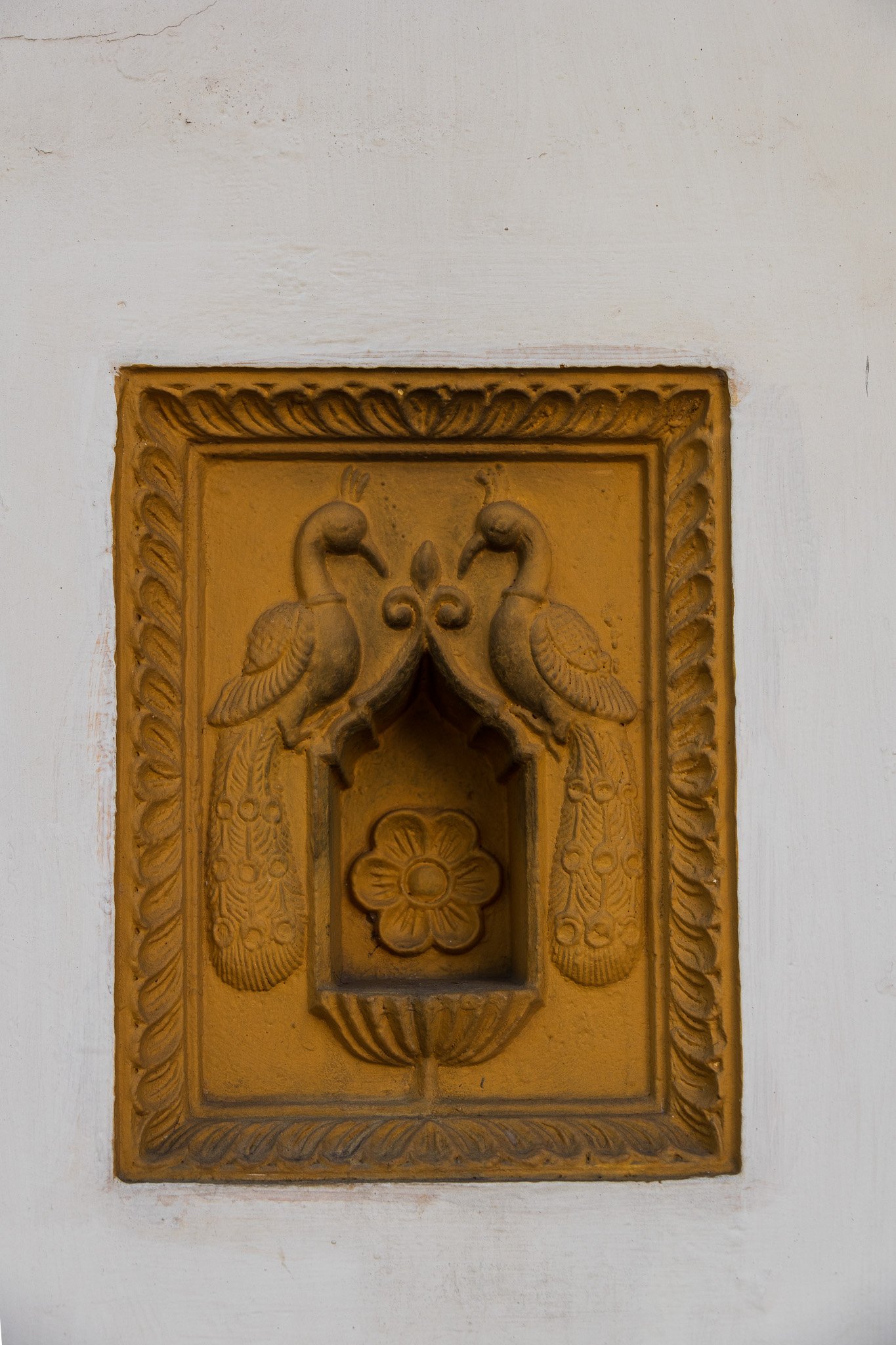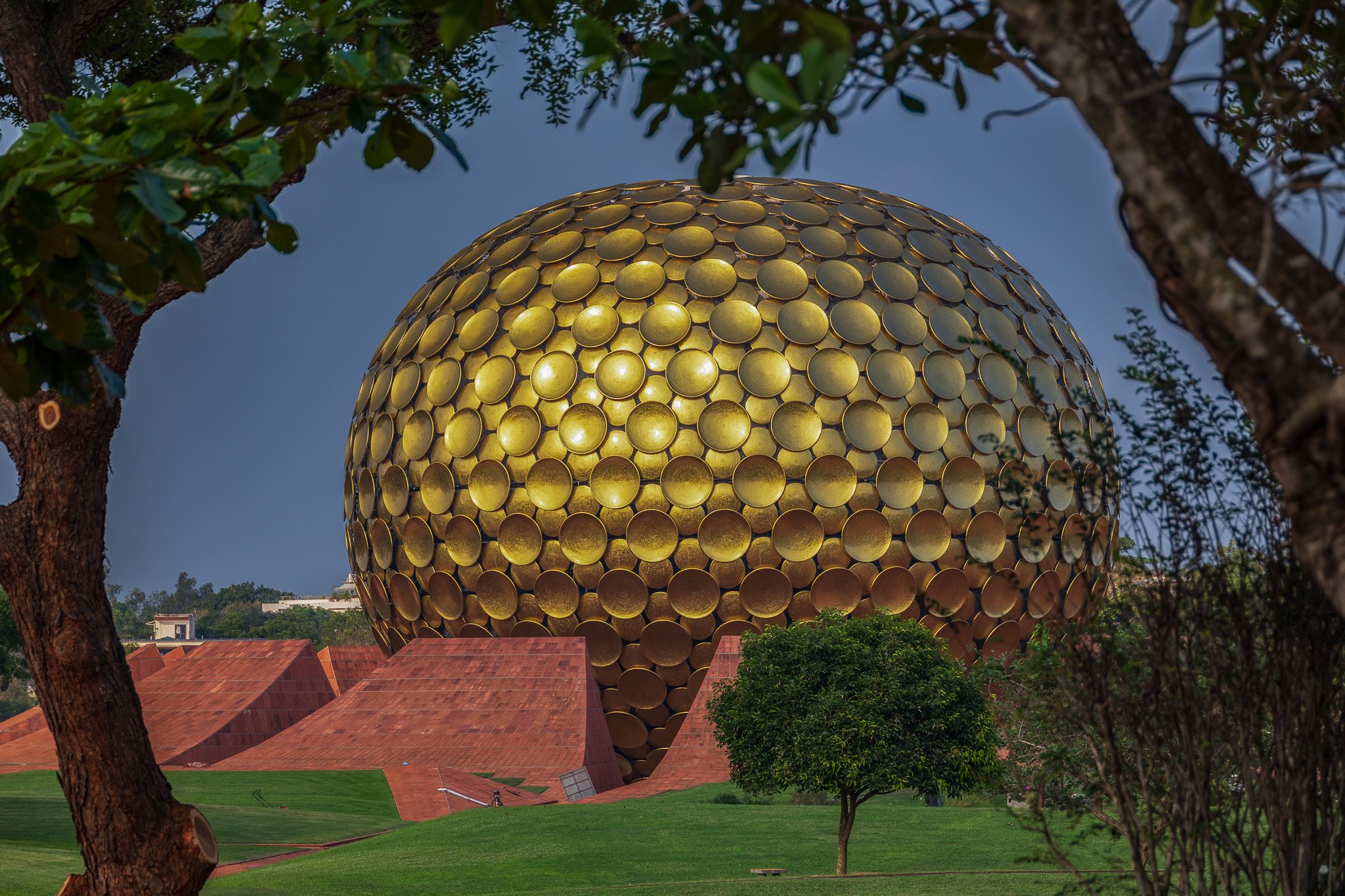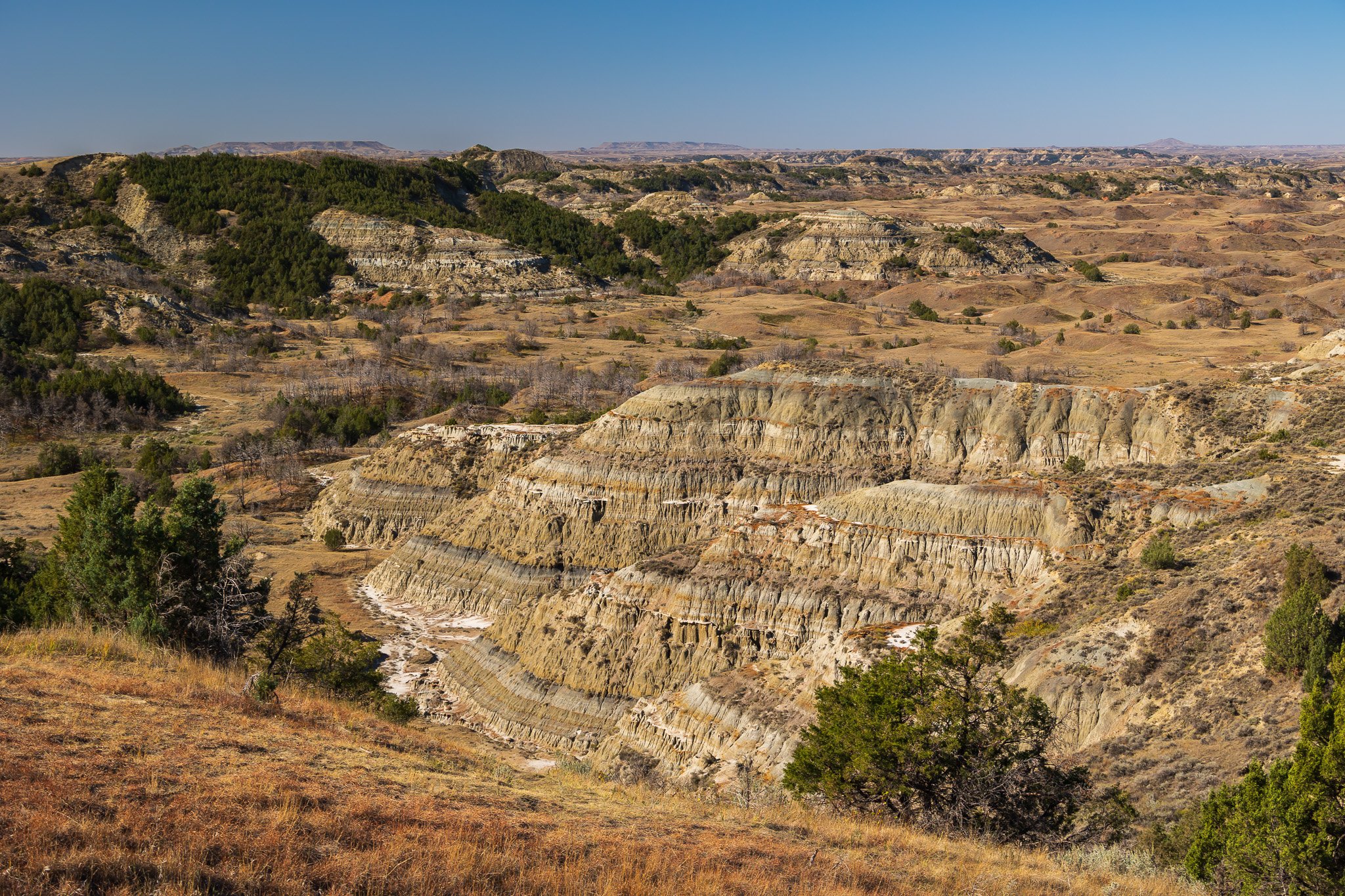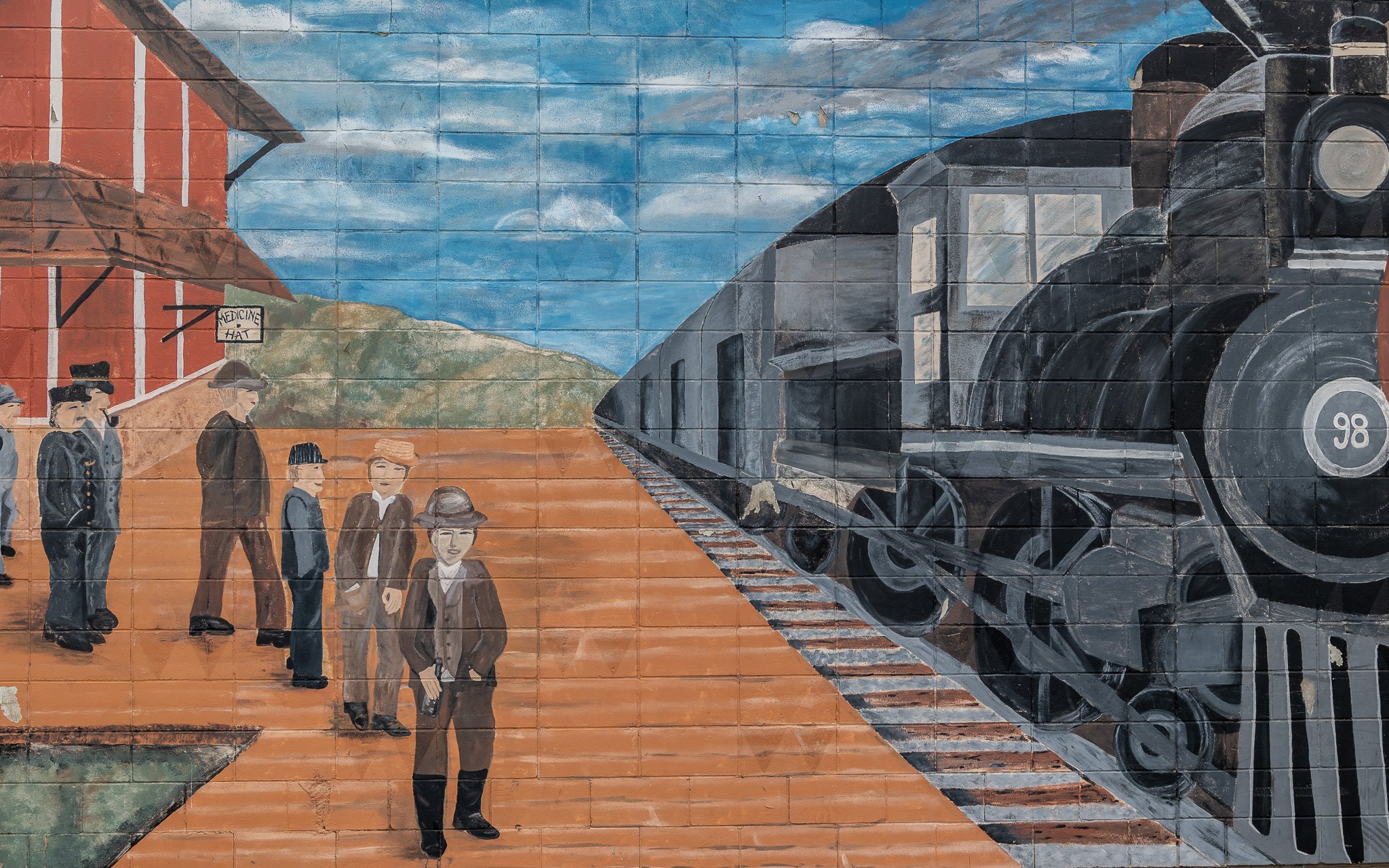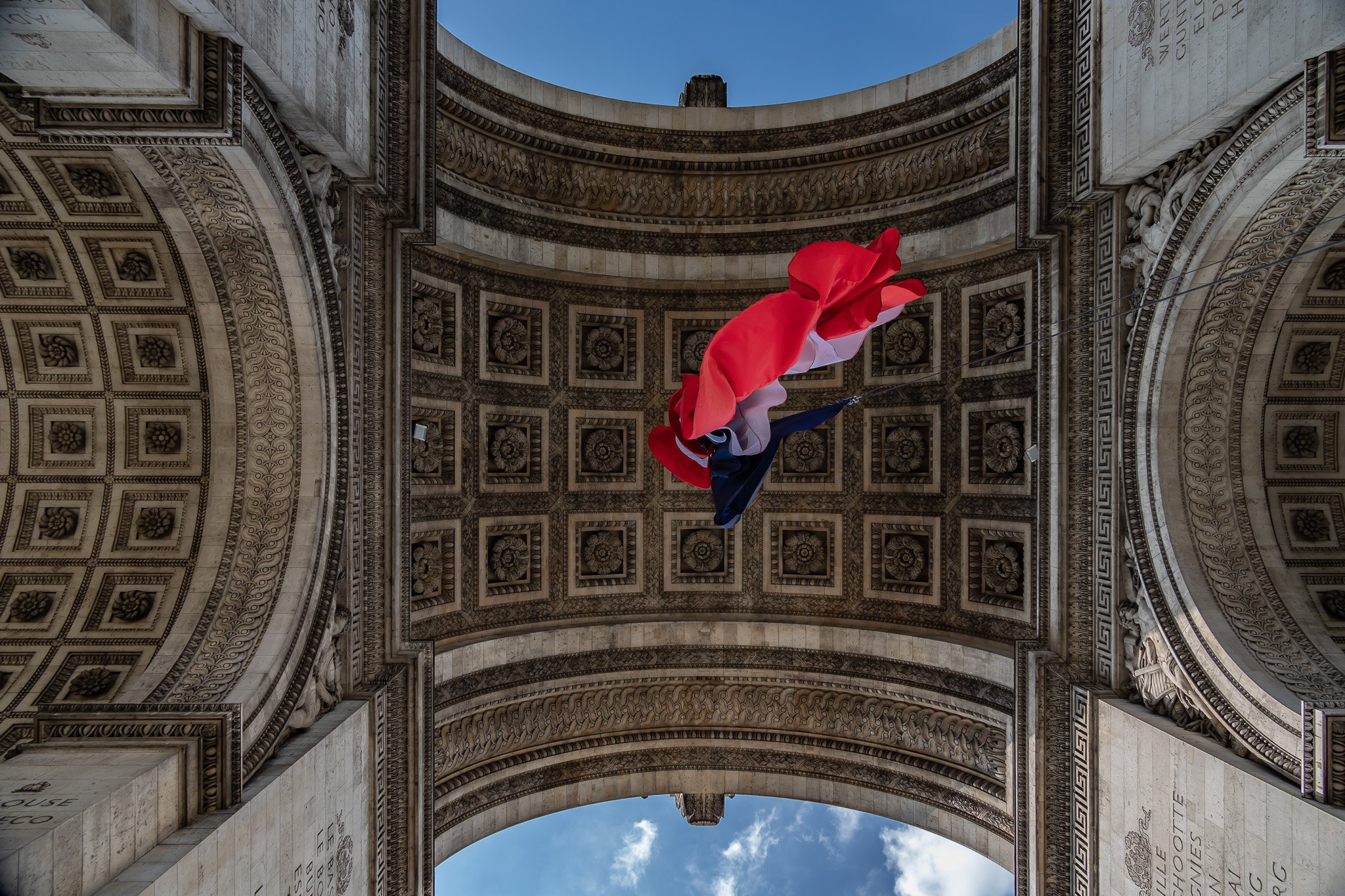For three years, every Saturday morning I have posted a Karl Chronicle documenting my journey following Karl Creelman around the world. Last week was the sesquicentennial post with a very special (fictional) interview with Sir Michael Palin, Karl and me, I hope you enjoyed it!
Today Dear Reader is a complete summary of the highlights of the last 150 chronicles:
In 2003, art students completed a decorative mural on the wall parallel to the railway station in Truro, Nova Scotia.
In 2016, Louise Trotter photographed the mural and was intrigued by the illustration of a young man riding a bicycle with a sign that read: Karl M. Creelman Around the World.
A “google” of the phrase “Karl Wheel Around the World” led to a reference about Karl Creelman, a young man from Truro, Nova Scotia who was the first Canadian to bicycle around the world in 1899.
Between 2016 - 2019, Louise spent countless hours at the Colchester Historical Archives researching the primary materials related to Karl and then tangent articles and historical facts.
In 2017, the mural was covered with siding.
In 2020, Louise set out her quest: to follow Karl’s trail around the world and photograph the places he visited.
Queen Victoria ruled the British Empire from 1837 till her death in 1901.
The British Empire was a vast network of territories and colonies covering a quarter of the Earth’s land surface, including the Dominion of Canada, Australia, Sri Lanka, India, Egypt, and parts of Europe.
The Suez Canal opened in 1869, providing a passage between India and Europe that saved 15 days of travel for this journey.
In 1873, Jules Verne set his fictional protagonist Phileas Fogg on his mission Around the World in Eighty Days.
Karl M. Creelman was born in Upper Stewiacke, Nova Scotia, Canada in 1878.
The Dominion of Canada comprised the colonies of Nova Scotia, New Brunswick, Quebec and Ontario.
On March 18, 1899, the Truro Daily News published an announcement that Karl Creelman intends to start an adventure riding his bicycle around the world.
On Thursday, May 11, 1899, at 12:45, Karl M. Creelman began an adventure after parting from his family - father, mother, one brother and five sisters.
It was only Karl’s third time riding a bicycle.
Three days after he departed Truro, Karl wrote a letter home to his younger sister Mattie (Marta Creelman) itemizing what he had packed: “A box of puke pills, a box of headache powders, a box of carbolic salve, a 2.0 lead pencil, ¼ thousand envelopes, and a suit of clothes.”
This was the first of over 40 letters sent to younger sister Mattie. Mattie was six years younger than Karl, so age 15 when he first departed on his journey.
Karl also packed a small, leather-bound book to get stamped by the postmaster in each town to verify his travels.
As reported in the Truro Daily News — a few days after his departure — Karl wrote: “Leaving Truro on my trip around the globe on the 11th, I naturally felt a little blue, but I outgrew it all in a few hours.”
When Karl returned from around the world back to Canada, he gave a series of lectures on his travels and told stories about his experiences. There are newspaper accounts that reference that these lectures used magic lantern pictures — a projector of sorts that Karl used to share photographs from his journey. To date, Louise has not been able to find these photos.
Louise mapped out her 75,000 km journey, ensuring that she travels to every location Karl documented on his trip.
Louise plans to complete her trip around the world in segments and document her journey in the weekly Karl Chronicles.
Karl’s first stop required him to walk five miles over sandy roads to reach Acadia Mines. At the time, Acadia Mines had been operating three local mines for about 50 years producing over 2 million tons of iron ore and would have been quite a bustling mining town.
The first stamp in Karl’s book was from the Town of Amherst. Although the old post office no longer exists, the building, with its red and grey sandstone, is still prominent in Amherst.
A mere 15 years later, a POW camp in Canada was established and existed until the end of the war in September 1919. There were 853 prisoners imprisoned at the camp, one of those was Leon Trotsky, the Russian Revolutionary.
Henry Ketchum, a New Brunswick-born civil engineer, proposed a ship railway across the narrow, 23km strip of land known as the Isthmus of Chignecto that links Nova Scotia to New Brunswick.
On May 17th, 1899, the Moncton Times reported that Karl had arrived in New Brunswick, it was the first time he had left his native province.
On August 14th, 2020, Louise left Nova Scotia to follow Karl’s journey. Except she ran out of gas a mere 40 km into her journey. Allen from Sparkle Brite Auto and saved her expedition.
Karl’s first stop in New Brunswick was at the newly constructed Dorchester Penitentiary, where he had a personal tour scheduled with the Chief Steward. At that time, of the 307 inmates, the majority of convictions were crimes of larceny, breaking, entering and stealing, arson, receiving stolen goods, and wounding with intent.
Louise opted instead to tour Canada’s first prison museum at the neighbouring Keillor Museum in Dorchester. The museum houses a collection of items from daily life in the Dorchester Penitentiary including shoes made by those inmates visited by Karl.
Karl spent the night at the newly opened Windsor Hotel in Dorchester. The hotel was a 5 storied building with a capacity for 75 guests, offering a daily rate of $1.50 to $3.00.
Karl arrived in the Celestial City which is no longer recognized by its nickname and is simply Fredericton, the capital city of New Brunswick.
Incorporated in the province on May 1, 1856, Woodstock is New Brunswick’s first town. Proud of its history, Woodstock offers a Heritage Walking Tour to see some of the original 19th Century Victorian Heritage homes.
When Karl passed through Grand Falls a significant construction project was underway and the work was attributed to a company that included Sir William Van Horne, President of the Canadian Pacific Railway (C.P.R).
As Karl made his way through New Brunswick, he would have biked over bridges to cross rivers and streams as he travelled onwards to Quebec. Many of those original bridges were covered to preserve the wooden construction. Louise travelled through many of these bridges including the longest covered bridge in the world in Hartland.
On June 8, 1899, Karl travelled to Rivière-du-Loup via the Madawaska River and along the Temiscouata railway. “The road was not very good at all, and after that, for the next 51 miles, it was frightful for miles there was nothing to wheel on except a cow path, and for 35 miles it was principally uphill, or up a succession of hills.”
Karl couldn’t speak any French. Louise thinks she can speak French.
To stay authentic to Karl’s experience in Quebec City, Louise booked her accommodation in Levis and took the ferry over to the old historic city. Like Karl, she explored the lower town including little Champlain Street then took the stairs to the upper town along Dufferin Terrace to the Plains of Abraham.
When describing his visit to Quebec City, Karl referenced the “large C.P.R. hotel as a magnificent structure.” This hotel is the Château Frontenac, a historic site of Canada and one of the world’s most photographed hotels with fantastic views of the St. Lawrence River and Quebec City.
When Karl arrived in Montréal, it was the biggest city in British North America, a busy metropolis, an important port amid expansion and prosperity. But Karl did not seem very enthusiastic about Montréal. Louise is very enthusiastic about Montréal but appreciates that it is a very different city than what was experienced by Karl.
In 1895 a monument was erected at Crysler’s Farm. Four years later, Karl rode his bicycle here and Louise visited 125 years after that. The Battle of Crysler’s Farm is considered one of the decisive land battles of the War of 1812 ending the American campaign for Montréal.
On his way to Kingston, Karl slept outside in train station buildings, saying that he was “trying to get tougher” although Louise suspects it may have been because he had no money. On her adventure, Louise prefers to sleep in hotels.
After Karl left Brantford, he was riding the famous “Red Bird” bicycle made by the local Goold Bicycle Company. By 1891, the company employed 50 men and manufactured 1,500 bicycles a year.
When Karl arrived in Chicago, the city was being rebuilt as a result of the Great Fire of 1871. The event catapulted Chicago into a city with renowned world-class architecture. Louise observed that the current evolution of Chicago’s architecture seems to be attributed to female Architects, designing beyond the conventional boundaries.
In Chicago, Karl was robbed of a brand new pair of suspenders for which he had paid exactly 13 cents. Crime tarnished Chicago’s reputation for some time, especially by 1920 when Al Capone moved to Chicago and went on to become the most notorious crime boss in American history.
In 1897, the Western Camera Manufacturing Company of Chicago started producing magazine cameras housed in wooden boxes with a leather cover–– they called their camera the Cyclone. Karl wrote to the Truro newspaper from Chicago, he proudly stated he will be using the Cyclone camera for the rest of his journey.
Louise ventured to the Central Camera Company photographic emporium, Chicago’s oldest camera store, in business since 1899. Hoping to learn more about Karl’s cyclone camera, she spent the morning with Don Flesch, the store’s third-generation owner.
Karl’s book with his postmarked stamps confirms that he was in Milwaukee, Wisconsin on July 31, 1899. When Louise arrived in Milwaukee, she discovered the 'Burke Brise Soleil' — the “wings” of MAM, a moveable sunscreen with a 217-foot wingspan that open and close throughout the day.
Karl biked northeast through Wisconsin, where over ninety percent of the farms in 1899 were dairy farms. There are over 7,000 registered dairy farms in Wisconsin today — equating to 3,350,000 cows in Wisconsin.
Highlights of 50 Chronicles
On August 4, 1899, after arriving in North McGregor, Iowa, Karl checked into the Depot Hotel and then used the hotel stationery to write letters to his family, first to sister Mattie and then to his Father.
On August 14, 1899, Karl wheeled into North McGregor, Iowa, but Louise visited the Town of Marquette. Where’s that on the map? As it happened, the town changed its name in 1920.
Karl passed through Prairie du Chien, the town that was the place of work or home for those residents who were active in the fur trade. Today, on the other side of the river, there is a museum providing insight into the lives of the most prosperous fur-trading family.
Before leaving this northwest corner of Iowa, Louise explored Pikes Peak State Park, renowned for offering premier views of the mighty Mississippi River.
Travelling north along the Mississippi River, Karl and Louise arrived in Minneapolis, the former “Flour Milling Capital of the World”. Karl would have pedalled past the working mills while inhaling the aroma of freshly baked bread. Today, those mills have been converted into lofts, offices, museums, and restaurants, leaving Louise nostalgic for when something better just popped up.
In Fargo, North Dakota, you are North of Normal, and Louise imagined the conversation between Karl and a local using the Fargo dialect: “Uffda, it’s been quite a journey to get to Fargo. I have travelled 3900 km to date, doncha know? No yeah, you betcha it’s hard work, and it’s going to take me a long time. Oof, no, I can’t stay here any longer. I’m off to Grand Forks and then around the rest of the world.”
Louise visited the general store at Bonanzaville, the outdoor museum with historic buildings to provide an insight into life on the prairies of North Dakota in the 1900s. She learned that although the medicine may contain different ingredients, her first aid kit and Karls were comparable.
Arriving in the town of Medora felt like walking through a Clint Eastwood western movie set while sidetracked in Theodore Roosevelt National Park.
Seeing the Badlands was so spectacular that Louise stayed sidetracked in the National Park for a bit longer.
Meanwhile, when Karl left the Red River at Fargo, ND, he wrote: “I found nothing but a vast wheat field through which was a railway track and an old Hudson Bay Company's trail running parallel to the railway.” So did Louise and she wrote about Hudson Bay Trading Posts.
The Truro Daily Newspaper shared a letter from Karl’s journey from Fargo to Grand Forks, North Dakota where he asked some locals Can you spare a nickel?
We left the midwest in song, specifically, the “Red River Valley”, singing from this valley they say you are going as we travelled back to the Dominion of Canada.
Chronicle #62 ended our travels in the MidWest with what we saw on the way. Then we headed north to the Canadian Prairies.
When Karl arrived in Winnipeg, the capital city of Manitoba, it was one-eighteenth of its current area and known as the postage stamp province.
Texting in 1899 didn’t exist and the only way Karl could communicate expediently back then was via telegraph.
Thanks to the prosperity from grains, fur trapping, and the arrival of the railway, more than two million immigrants arrived in the Prairies to make a new life. Sadly, many who came to work were exploited and lived in poverty, or, lost their life due to unsafe working conditions. In recognition of this history, Louise went Behind the Scenes a Journey from Darkness to Light and visited the Canadian Museum for Human Rights.
Upon leaving Winnipeg, Karl and Louise continued west but only after Louise’s visit to neighbouring Saint-Boniface, Winnipeg’s francophone neighbourhood full of heart filled history.
Louise stopped to get a selfie with a giant CokeTM can before trespassing, exploring the Fort La Reine Museum on the outskirts of Portage La Prairie.
Karl proceeded into what was Assiniboia, North-West Territories and more familiar to Louise as Wolseley, Saskatchewan, find out more at: where’s that on the map?
Karl wrote a letter to his sister sharing that he had seen lots of prairie dogs and wolves as well as ducks, plover, snipe and Prairie Chickens.
Karl and Louise both stopped in Qu’Appelle, Saskatchewan. Karl was referenced in the ‘big green book’ that documented the history of the district and his visit there in 1899. Louise was thrilled to read about that and could almost feel Karl’s presence in this small town.
Upon arrival in Regina, Saskatchewan, Louise stopped for a tour and went Behind the Scenes at the Saskatchewan Legislative Building.
Vast yellow fields of wheat and barley on flat plains as far as the eye can see. Louise followed Karl through The Prairies looking out at fields of gold stretching for days.
In Moosejaw, Karl encountered “10,000 mosquitoes”, and Louise encountered Mac the Moose!
Although Karl got lost and went Off Course with Crazie Pedro, Louise continued through to Medicine Hat.
On September 24, 1899, Karl wrote a letter to sister Mattie from Lethbridge, Alberta on The Hotel Lethbridge stationary. Louise stopped to take some photographs of the Lethbridge trestle bridge, the longest and highest of its type in the world.
Karl was chased by vicious-looking ranch cattle six times, and once by a bunch of horses on the prairies around Fort MacLeod.
Louise got sidetracked where the prairies of Alberta meet the peaks of the Rocky Mountains in Waterton Lakes National Park.
Chronicle #79 ended our travels in the Prairies with what we saw on the way.
On July 13, 1901, Karl boarded the S.S. Princess Josephine, travelling 80 miles across the English Channel from Dover, England, to Ostend, Belgium. Louise met up with Karl on the Continent
Karl and Louise travelled In Bruges and Im Brugge
When Karl was in Belgium, pharmacists only used chocolate to make pills more palatable. Louise was spoiled for choice as today there are over 2,000 chocolatiers in Belgium each suggesting they have The Best Chocolate in Belgium
When Karl travelled around the world on his bicycle in 1899, it was simply the most practical and feasible way to travel. But in the Netherlands, this continues to be the trend. The local newspaper commented that Karl’s bike was Duly loaded to bear the burden of the Gentleman
Louise was thrilled she was able to report Meeting Wim
Wim was writing a book about a Dutch man who made two ‘grand tours’ on a bicycle between 1895 and 1898. His name was Albert Sutherland Royaards
While Louise was following Karl in the Netherlands, she received a message from a fellow Nova Scotian theorizing that he –– “happens” to have the bicycle that Karl rode around the world! Could it be that The Red Bird Returns?
Louise learned a lot about vintage bicycles and was able to confirm: It’s a Red Bird Alright! Although sadly, not Karl’s Red Bird.
Louise kept researching Red Bird bicycles and went Behind the Scenes at the Goold Bicycle Company to get her hands on a copy of the 1899 Brantford Red Bird catalogue
Karl arrived in Cologne, Germany and got into trouble with the police; he thought he was travelling Over the Rhine to a watery grave. Louise did not encounter the police and crossed a different bridge laden with love locks.
When Karl and Louise crossed over the Rhine River, their view upon arriving in Cologne was the same, with the central, dominant landmark being the Cologne Cathedral.
Louise went on a historical virtual reality time ride proclaiming: Move over Marty McFly, I’m going back to the past.
Upon entering France, Karl had already cycled 25,000 kilometers. Louise lamented that if Karl was travelling two years later, he likely could have been a contender in the Tour de France, and it’s Karl leading the race wearing a yellow jersey.
Karl encountered heavy rain approaching Paris, passing the ‘City of Lights’. Louise thinks Karl would have marvelled at the Eiffel Tower, which was constructed back when Karl started his journey in 1889.
Passing through Amiens, France, was an opportunity to credit the imagination of Jules Verne. Jules lived in Amiens and is indirectly responsible for a legacy of world travellers, and this post was a homage to Globetrotters: Jules, Nellie, and Rosemary.
For this leg of the journey, Karl travels through the ‘Continent’ taking a mere 14 days to bike over 1000 kilometers. Louise also took 14 days to travel to those same places but got there on trains, documenting what we saw on the way.
Louise arrived in Scotland and started exploring Karl’s family history, confirming that although emigrating from Ireland the Creelmans didn’t consider themselves “Irish”. Ulster-Scots, Scots-Irish, Potato, Potahto
The start of Karl and Louise’s travels through Scotland was an encounter with Sir Walter Scott, in the Land of Scot
It’s unanimous: Edinboro’ a beautiful city indeed
Karl was quoted that the impetus of his travels was To have a look around and gain a bit of experience
Highlights from 100 Chronicles
We continued travelling through Scotland and when Louise met up with Karl in Stirling, the most historic town in Scotland, so the Stirling people say. It felt for the first time they weren’t 120 years apart in their respective journeys.
Karl and Louise climbed the 246 steps up a spiral staircase at the Wallace monument.
We continued east to Kinross and then to Lochleven Castle, where Mary Queen of Scots was imprisoned and escaped.
Arriving in Dundee, Karl and Louise had experiences related to the R.R.S. Discovery. It was a moment of serendipity linking Karl’s experience and the course of history to Louise’s experience.
Louise visited Arbroath Abbey to see the Catherine Wheel and learned some history that had nothing to do with licorice. The abbey was in ruins when Karl visited in 1901, and Louise confirmed, it is still in ruins!
Karl shared to the newspaper that the next town of importance reached was Stonehaven and more details would be shared in a subsequent letter. There was no reference to that letter, but Louise wrote what she thinks Karl would have written based on her experience.
From Arbroath, Karl travelled to Aberdeen. His short visit made the news in two Aberdeen papers and in particular they were impressed with his “credentials”, the five separate letters from distinguished Canadians endorsing his character. Louise has no such letters but would assert she has lots of character.
Karl was found on the road suffering from symptoms of his malaria and was brought to Beaufort Castle to recover with the “Lovat Scouts”, a unit of highlanders for the British Army to fight in the Boer war. Louise not only found the now private Castle but trespassed making her way on the property to take some photos.
Karl filled up a lot of his book with messages from people from Inverness.
Karl and Louise visited John O’Groats, the very northeastern tip of Great Britain
Louise got sidetracked on Orkney Island.
And then continued to stay sidetracked, travelling to the Outer Hebrides following the cast of Call the Midwife instead of Karl.
Travelling westwards to Glasgow, the adventurers did the “Trossachs en route”, Louise ventured to the Munro of Ben Nevis, and then to Eileen Donan Castle, and around Oban leaving the underside of her rental car a little worse for wear.
Karl writes a sweet letter to younger sister Mattie from Glasgow
The 1901 International Exhibition was happening in Glasgow Karl was one of 11 million people who visited. Sadly, it only lasted for 6 months so Louise visited the only remaining structure, the Kelvingrove Museum.
Karl and Louise both concurred that when it comes to Scotland: “…any Canadian who turns up in that part of the world is treated with the greatest of hospitality.”
After a lot of difficulty leaving Australia, Karl managed to find a passage to India.
Karl travelled to India on the SS Bezwada, a large cargo steamship built in 1893 employed as a holster taking case of 230 horses destined for service with the Bengal Lancers regiment.
After arriving in Kolkata, the horses were brought to a spot called “Waler Corner’' where the Indian Army officials and Australian horse traders would meet. Waler Corner was a location next to the Grand Hotel in Kolkata.
At this juncture, Louise intersected with Karl's journey, commencing her exploration at the former Grand Hotel, now the Oberoi Grand Hotel. Her journey unfolded with an immersive tour of the hotel steeped in history, guided by the legendary concierge, Mr. Amitava Sarkar.
As Karl meandered through the streets of Kolkata, marked by a distinct European influence evident in the neoclassical architecture, he visited the Black Hole of Calcutta—a site symbolic of the event that sparked the British Empire's Imperial conquest.
Following his footsteps, Louise explored the Black Hole and other colonial buildings, many now in varying states of disrepair—some crumbling while others endure as functional entities.
Despite the faded grandeur of Kolkata's colonial past, the streets pulsated with energy. Louise learned that Life happens on the streets of Kolkata.
Karl's narrative included a stop at Chandernagore, a small commercial city under French rule since 1816. He documented this slice of India's history, prompting my curiosity. Intrigued by "French India," Louise opted for a detour to Puducherry, formerly known as Pondicherry or "Pondy."
Puducherry unfolds as a captivating fusion of cultures and spiritual experiences. Auroville, a visionary township dedicated to "human unity," emerged from the spiritual journey of an Indian philosopher and Nationalist movement leader.
Louise stayed in a hotel that was once a grand Chettiar family mansion standing proud for over 130 years.. The Chettiars, influential merchants from around 1875 to 1925, left an indelible mark on India's economy, investing wisely in real estate and erecting magnificent mansions in Chettinad villages.
Karl wrote about his concerns regarding the quality of water in India, Louise found that 120 years later, the concern about the quality of water is being eclipsed by the reduced availability of water.
Karl, after spending ten days in Kolkata, "oiled up his bike" and commenced his westward journey along the River Ganges observing Hindu rituals on the riverbanks, noting the burning ghats and the constant influx of bodies.
Eager to witness these scenes, Louise embarked on a morning boat cruise along the sacred River Ganges, maintaining a respectful distance she passed all 84 ghats.
However, Karl's sojourn in Varanasi was marred when he contracted malaria fever, as reported in a subsequent newspaper article: Karl M. Creelman was unfortunate on the way to Benares.
Karl's resilience saw him through a substantial 10-week recovery period, during which he found companionship with the Black Watch soldiers deployed to India in response to a mutiny. Despite not being at full strength, his determination to reach Bombay propelled him back onto his bicycle.
Before departing Varanasi, Karl explored the city's tourist spots, enriching his experiences during his travels in India. Displaying audacity, he sent a postcard to the Maharaja of Benares, expressing his desire to visit and then showed up at the Palace doorsteps.
Louise was also keen to meet the Maharajah and created a master plan.
Louise stayed at the Nadesar Palace, owned by Maharaja Prabhu Naryan Singh, in 1899. The palace, filled with antiques and art pieces, exuded the spirit of the Maharajas from the British Raj era.
Ramnagar Fort, constructed in 1750 with cream-coloured sandstone, offered a glimpse into Mughal-style architecture. Despite some limitations compared to Karl's access, Louise experienced a touch of history.
While Louise couldn't enter the Royal Quarters or dine with the Maharaja, she had the privilege of meeting the current Maharaja, His Highness Anant Naryan Singh, on Christmas day—an encounter that felt like a convergence of reality and history.
Louise was feeling nostalgic about growing up in the 80s and the joy of the “mixed tape” while researching Karl’s playlist of his travels which took the form of his own voice, melodies hummed or whistled as he pedalled through his travels on his trusty Red Bird bicycle.
While Louise was navigating Karl’s route through India, she took the time to visit the UNESCO-designated World Heritage site: Shore Temple of Mahabalipuram
Continuing to enjoy her time exploring temples, Louise then visited the magnificent Brihadeeswarar Temple in Thanjavur. Brihadeeswarar meaning "Big Temple," earns its title from having the tallest tower at 66 meters.
Louise followed Karl to Lucknow. First she visited the Residency, a group of several buildings constructed in 1775 as the residence for the British officers and their staff. In May 1857, there was a rebellion and 3,000 British civilians were under siege for 148 days resulting in extensive damage to the Residency and buildings falling to ruin.
Then Louise visited the Bara (big) Imambara that included a mosque, assembly halls, separate prayer areas for men and women, and beautifully manicured gardens.
Karl wrote about his visit in Cawnpore “...situated on the eastern bank of the River Ganges, and is a city that has many historic and interesting spots. There is the memorial well, into which the bodies of over 200 Europeans were thrown, after the massacre by the rebel Sepoys, in 1857.”
But nothing quite matched the awe-inspiring sight when Karl saw the Taj Mahal. He termed it the "dream in marble," and Louise shared his awe. First she starting at Mehtab Bagh, offering a vantage point to behold the Taj Mahal at sunset when a gentle tangerine hue delicately landed on the iconic white marble mausoleum.
Then meticulously planning her day, Louise set out to see the Taj Mahal at sunrise and was not disappointed.
As Karl advanced through Agra, he explored Akbals Fort, acknowledging the towering height and extensive span of the walls around the fort. So Louise did the same.
Karl left Agra and proceeded south to Futehpur Sikri, the place originally planned to be the capital of the Mughal Empire. Louise didn’t go there, but instead visited Delhi, the National Capital of India exploring Red Fort, Humayun's Tomb, and Lodi Gardens.
Staying true to Karl's experiences 120 years ago, Louise stepped back and delved into the time-honoured techniques of crafting murukku, tiles, and rope.
Karl pedalled steadily westward on his journey to Bombay (now Mumbai). Louise decided to take a detour to the Pink City, a quintessential destination for any traveller in India.
After an incredible experience in India, this chronicle wrapped up What we saw along the way
A special sesquicentennial post included an interview (fictional) with Karl and Louise in Conversation with Sir Michael Palin.
In case you’ve missed them, click here for more Karl Chronicles
The Karl Journey is now registered as an official expedition with the Royal Geographical Society













